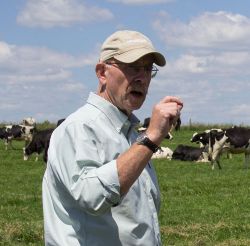First Cut: Just don’t do it |
| By Mike Rankin, Managing Editor |
|
|
 Mike Rankin For over 20 years, our family lived in a large, century-old farmhouse, held together with state-of-the-art 1950s “knob and tube” wiring. It was there that I honed my home improvement skills; this was done out of necessity, forced upon me by a never-ending onslaught of fix-it jobs and a checkbook that didn’t accommodate hired labor. For direction, I often referred to home improvement books during the early years and Google in the later ones. Carpentry, construction, and electrical work were all accomplished with reasonable success. But then there was plumbing. Pipes in that house weren’t held together by threads, but rather an unbreakable bond of rust and grime that hardened through the ages. Those connections would have rivaled the strength of any on the space shuttle. A pipe wrench was worthless; a reciprocating saw and sledgehammer were my plumbing weapons of choice. Time after time, I would attempt to tackle whatever new plumbing calamity was presented. Each and every time resulted in at best — drips or streams — but more often Old Faithful-like geysers or an unabated indoor swimming pool. Google had never encountered pipes like this place had. Checkbook aside, I knew that the smart play was to call a professional. Yet, again and again I would give it the old college try. The results never differed. I believe there’s an old saying that defines insanity as doing the same thing over and over again and expecting different results. That was me and plumbing projects. Through the years, I’ve also learned that forage production offers many opportunities to repeat similar “Don’t do it” practices that we know are destined to fail or cause harm, but they still are done every year. A few examples . . . Seeding alfalfa after or into alfalfa: Following a terminated alfalfa stand with a new one is often desired. Unfortunately, the autotoxic effects of alfalfa make this a losing proposition every time unless there’s at least a year between stands. Even if there’s a full winter in between, research tells us that productivity of that new stand will be 30 to 40 percent less. The same autotoxic principle applies when trying to interseed alfalfa into a thin alfalfa stand. Overgrazing: The practice of overgrazing is repeated every year when a lack of moisture and warm temperatures stifle pasture growth. The effects are usually long lasting, cutting production during the fall and into the next year. Keep 3 to 4 inches of growth on pastures even if it means having to feed some hay during summer. Overgrazing never works for the better. Raking legume hay too dry: Another practice that is repeated each and every year. Perhaps sometimes it’s the best choice of two evils, but that’s still no reason to expect leaves to stay on the stem. If leaf percentage accounts for 70 percent of forage quality, it’s easy to see how this practice can just kill hay feeding and marketing value. Baling too wet: Who among us hasn’t pushed this envelope (probably more than once)? Who among us hasn’t spent sleepless nights wondering what the temperature in the haystack happens to be? The list can no doubt go on, but the point is that repeating proven undesirable practices rarely brings about desirable results. A few years ago, my wife and I relocated to a newer, smaller home. Somehow, my reciprocating saw got lost in the move. This article appeared in the March 2018 issue of Hay & Forage Grower on page 4. Not a subscriber? Click to get the print magazine |
